The number of high-quality books released in 2024 was arguably the most hopeful happening of a year filled with grim this, gross that, and considerable loss. In celebration of language—a tool that can divide and cast clouds, but also unify and clarify—these tomes are among some of the year’s highlights. Books are universal, but preferences are personal; meaning feedback and suggestions for other favorites sent by readers are welcome! Such additions are a terrific indication of more, abundant hope as the new year begins.
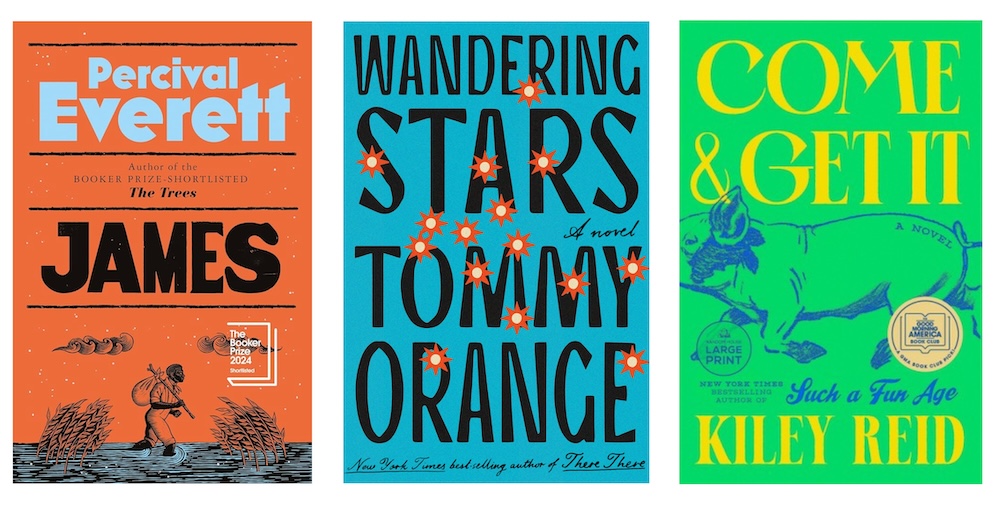
FICTION
Kaveh Akbar, Martyr! (Knopf)
Full of so many remarkable truths delivered in so many beautifully written sentences and scenes, it’s to be expected that some will be forgotten. But the central story of a young aspiring writer, a second-generation Iranian immigrant, and recovering alcoholic who aches for his life—and imagined martyrdom—to have meaning is likely to remain long after the last page. A stunning, haunting debut novel.
Percival Everett, James (Doubleday)
Simple on the surface, this retelling of Mark Twain classic Adventures of Huckleberry Finn is told from the viewpoint of Finn’s companion, the enslaved Jim. Multilayered and rich with historical and contemporary references, this book begs to be read again and again.
Tommy Orange, Wandering Stars (Knopf)
From the first page to the end, Orange takes command of this sweeping story about the colonization and genocide inflicted on Native Americans in this follow-up to Pulitzer finalist There There. Never abandoning searing pain and sorrow, readers will find zany dialogue, characters with quirks, questionable addictions, poor choice in friends, and difficult family relationships, plus other traits that make them deeply human and relatable.
Louise Erdrich, The Mighty Red (Harper)
One of Erdrich’s best books, in which the story flows like a river whose currents toss, tear at, and test the characters in its water. Love of all kinds—a mother for a daughter, a romantic love triangle, love for the land—is embroidered into Erdrich’s weave. Wise and wonderful, Erdrich reaches to the heart of a community and holds it up for all to see its glories and tragic downfalls.
Kiley Reid, Come and Get It (Putnam)
A white writer in her late thirties arrives as a visiting professor at a university and interviews a group of students who live in a dorm for scholarship recipients. She begins to write a book about their flaunted privilege and the foils of academia. Not snarky, but could be: a demonstration of Reid’s finesse.
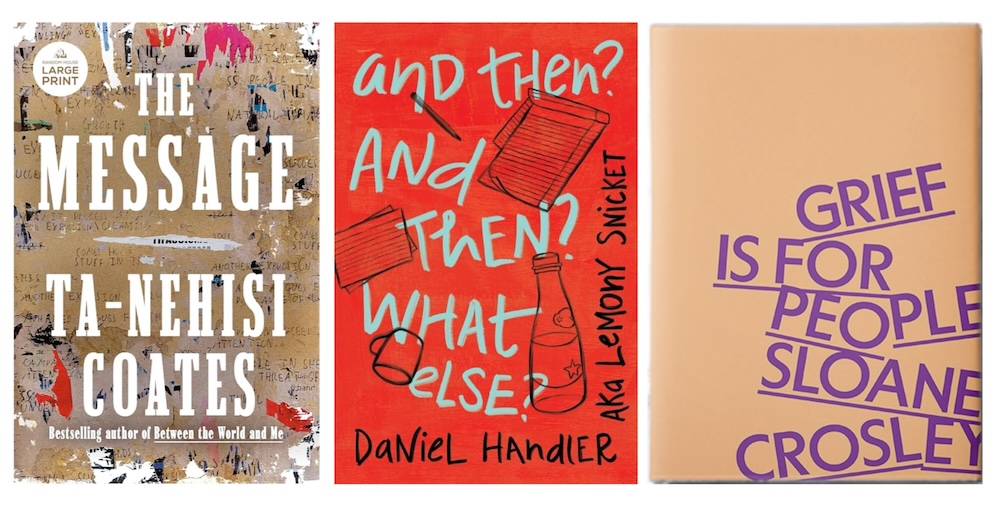
ESSAYS AND NON-FICTION
Ta-Nehisi Coates, The Message (One World)
The award-winning Coates combines autobiography and reportage in this examination of race during three journeys. Traveling to Senegal, to South Carolina, and to Israel and Palestine, he seeks his identity as a Black American. In many ways critical of the journalism profession, of which he is a part, Coates shifts from early, meditative chapters into sometimes-blistering indictment and leaves a reader with much to consider about reportage and truth.
Slane Crosley, Grief is for People (MCD/FSG)
With deeply philosophical and achingly introspective prose, Crosley puzzles through grief and loss—a burglary, a friend’s suicide—with remarkable wit, anger, curiosity, and humility. This is in no way a self-help book, but nonetheless, offers with her unique perspectives, help.
Wallace Carvell, Another Word for Love (MCD)
A memoir becomes a manifesto in the hands of Carvell, whose life story begins and passes through gauntlets of pain, addiction, racism, homophobia, and most kinds of trauma imaginable. His capacity for forgiveness and love springs up in surprising and completely believable actions and is expressed with sentences to savor for their pointedness and grace. Read it and be all the better for having done so.
Daniel Handler, And Then? And Then? What Else? (Liveright)
The author better known as Lemony Snicket bounces through his childhood memories and adult experiences as a novelist. Addressing a variety of improbable tag-on topics, from misogyny in movies to his happy 26-year marriage, Handler’s easygoing buoyancy will appeal to fans—and anyone seeking a memoir containing more fun than fury.
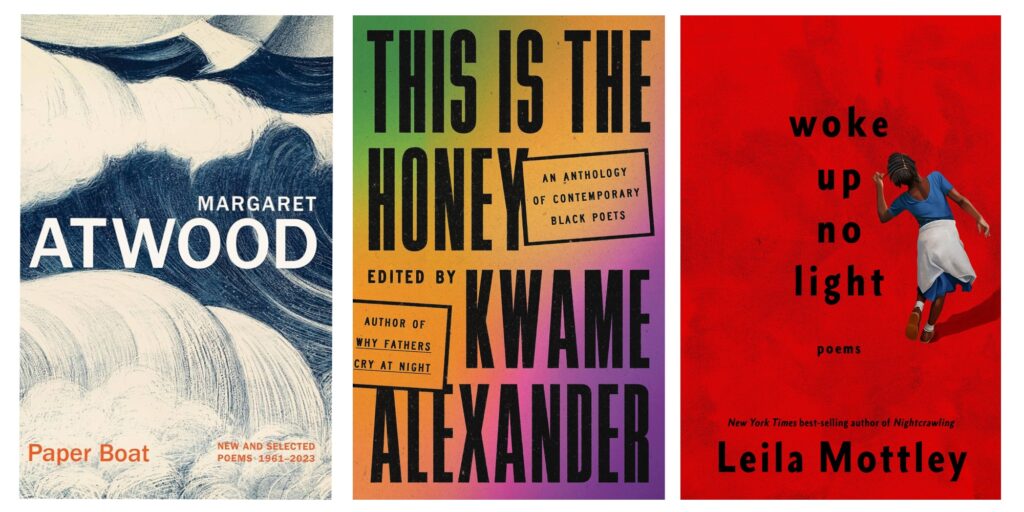
POETRY
Leila Mottley, woke up no light (PRH)
Reading each poem by the 2018 Oakland Youth Poet Laureate and NYT best-selling Nightcrawling author is like popping a blister. There’s intense pain and equal amounts of pleasure in the pressure released. Returning to her “home” genre in this collection, Mottley proves that her talent and mettle as a poet remains undiminished.
Matthew Zapruder, I Love Hearing Your Dreams (Scribner)
The marvelous thing about Zapruder’s work is how each collection seems to be in conversation with his previous book of poetry. It’s as if a son is talking to a father, who in a prior edition was talking to his father. So it is with these poems, described as “dream songs for an age of insomnia.” Writing that is elegant without becoming decorative, a hallmark of his work, shines throughout.
Kim Addonizio, Exit Opera (W. W, Norton & Company)
If not already a fan of Bay Area-based Addonizio, become one. The collection moves through time, mortality, and the widely variable landscape of human life with assurance, vulnerability, and mystery, creating intriguing triangles. A person can take each poem at face value, relishing it for the architecture and word choices, but also sink into the work as a whole and perhaps, rise up to a new world.
Various authors, This Is the Honey, edited by Kwame Alexander (Little, Brown)
This is an essential anthology that includes work by more than 100 living Black poets. With a mix of established and emerging voices, Alexander has compiled a volume that celebrates the poetic tradition and raises the flag for the future of Black writers working in the genre.
Margaret Atwood, Paper Boat (Alfred A. Knopf)
Spanning 60 years of work, Atwood casts her signature spell in a thick collection of new and selected poems. Fans of her novels will recognize a propensity for drafting remarkable, transformative characters and imagery; scholars will enjoy seeing how her poems evolved as the years passed and her wisdom and craft expanded.
ROMANCE
Various authors, Someplace Generous, edited by Elaina Ellis and Amber Flame (Generous Press)
Romance fiction written by BIPOC, queer, and disabled authors is collected into one volume of 21 love stories. Running the gamut from goofy to gorgeous to just good stuff, the stories vary in length, tone, and intent, but never sacrifice quality.
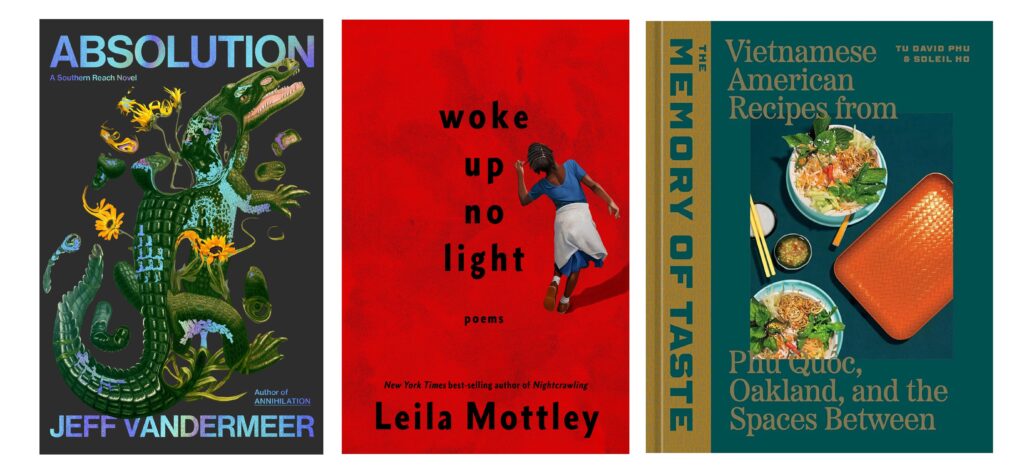
SCI-FI
Jeff VanderMeer, Absolution (MCD)
VanderMeer’s Southern Reach trilogy extends itself in an prequel set two decades prior to its predecessor. A research trip, a mind-controlled black op, and a soldier tricked into engaging in a dangerous mission each have their own voice as the twisty narrative wreaks havoc in this haunting work.
Ann Leckie, Lake of Souls (Orbit)
Leckie is nearly chameleon-like in fashioning these 18 stories, which read as if they were written by 18 different writers, all of them talented. It’s analogous to watching Lebron James work his way around a court using subterfuge, relentless switcheroos, amazing agility, and blazing strength. There seems to be no limit for Leckie on the page and each literary maneuver comes with her usual, carefully constructed plot and heartfelt passion.
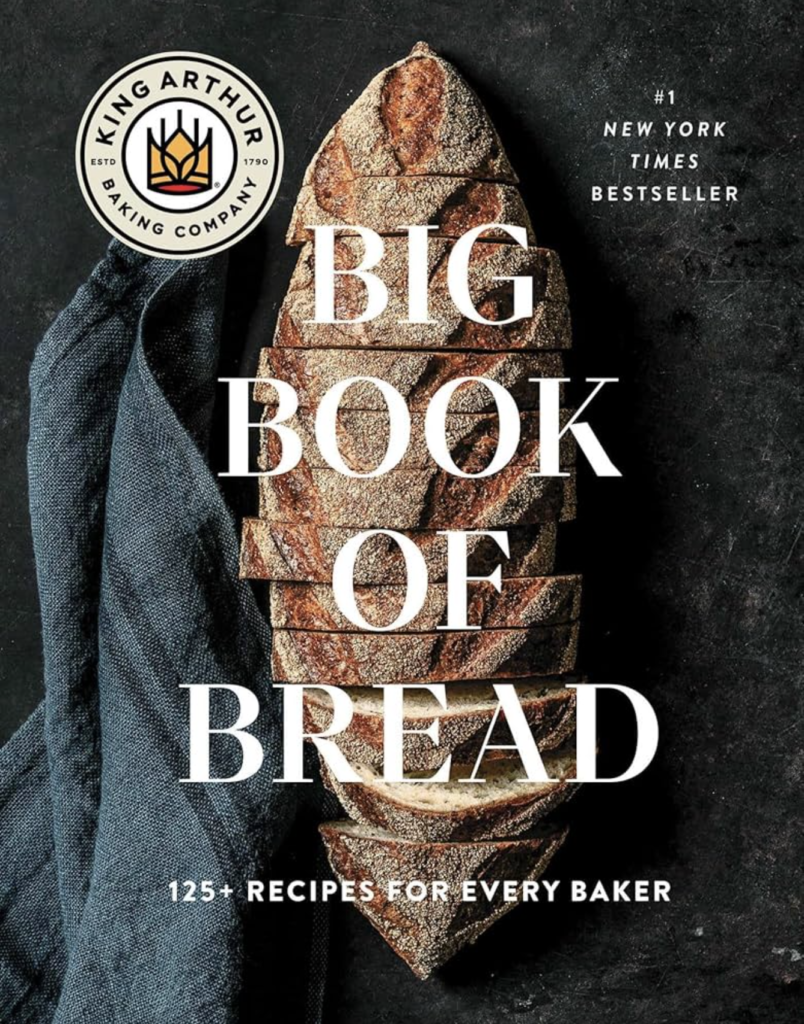
COOKING
Chef Tu David Phu and Soleil Ho, The Memory of Taste (4 Color Books)
Honoring his parents and his Vietnamese, Khmer, and Chinese ancestry, celebrated Oakland chef Tu David Phu crafts a rewarding cookbook with co-writer Ho, former San Francisco Chronicle food reviewer and now opinion columnist. Even if a reader never makes a single dish from the many recipes included, this is a book with stories as savory as its food. Essays address colonialism, family, poverty, culinary ingeniousness, the refugee experience, workplace equity, and more.
The King Arthur Baking Company, Big Book of Bread (Simon and Schuster)
It is a fact, according to the King Arthur, that over one-half of bread bakers make sandwich bread and rolls, and sourdough is the third most commonly baked item. Perhaps this is not essential knowledge, but nearly everything else is in this comprehensive “bread bible.” The instructions are straightforward, the recipes enticing, the images instructive and eye-pleasing. The only hard part will be fighting over who gets the biggest slice of whatever pops out of your oven.

ART
D.C. Helmuth, Hidden Libraries (Lonely Planet)
Photos of out-of-the-way and lesser-known places around the world where books are stored and shared make Helmuth’s a must for library lovers and fans of the (literally) underground. Isolated stacks in the South Pole and rare, earth-covered repositories in Japan remind folks that books are treasured and collected everywhere.
Maria Popova, illustrated by Ofra Amit, The Universe in Verse (Storey)
If a book lover is not already a fan of the author of the Marginalian (formerly Brain Pickings) blog Popova, these 15 brief essays combining scientific exploration with poetry will instantly convert them. Each chapter is launched with a marvelous illustration by Amit. (A signature element of Popova’s blog is the wonderful artwork woven into each post.) The author is known for her support of fellow writers and literary organizations, making this gift to self or others an indirect act of philanthropy.
GRAPHIC NOVEL
Ai Weiwei, with Elettra Stamboulis and Gianluca Costantini, Zodiac: A Graphic Memoir (Ten Speed Graphic)
Weiwei’s family history and philosophies are told with stunning artwork and the graphic biographies of other famous artists. Enough said. Get it and be impressed.

CHILDREN’S AND YA
Akiko Miyakoshi, Little Shrew (Kids Can)
A small shrew lives modestly among humans. Remarkably weighty enough to make a compelling narrative, the sensitive artwork in this tome written for kids aged five to eight does much to create a sense of safety, tenderness, practicality, and comfort enjoyable to young readers and those who read to them.
Annie Barrows, illus. by Sophie Blackall, Stella & Marigold (Chronicle)
The creators of children’s series Ivy + Bean bridge into extended popularity with this charming story of two sisters, Stella and Marigold. The two form a bond and shared understanding; the parents remain mystified, but not cold or uncaring. A teen might call the parents clueless, but Barrows avoids clichés and granting them center stage, instead and rightfully focusing on the sisters’ relationship that endures through everyday ups and downs in this book made for six to eight-year-olds.
Jason Reynolds, Twenty-Four Seconds from Now… (Atheneum/Dlouhy)
Seventeen-year-old Neon and Aria were kissing, just 24 seconds before this story begins. Jumpcut to opening a condom with fingers fumbling, as Neon anticipates their “first time”: Reynolds’ development-in-reverse narrative offers a young-romance-in-the-making for ages 14 and up. What puts it on the list as a must-read, is that embedded in this simple envelope is a compelling story about Black love, community, and identity.
Michelle Meadows, illus. by Jamiel Law, Jimmy’s Rhythm & Blues (HarperCollins)
Introducing a young person to writer James Baldwin with this poetic biography written for ages four to eight is like passing a rare gem to an heir. With rhymes that sing, Meadows slowly reveals how Baldwin faced bullying and prejudice, found support, discovered his identity as a Black queer activist, and began to write. This is a work about a man whose compassion turned into words that changed the world.
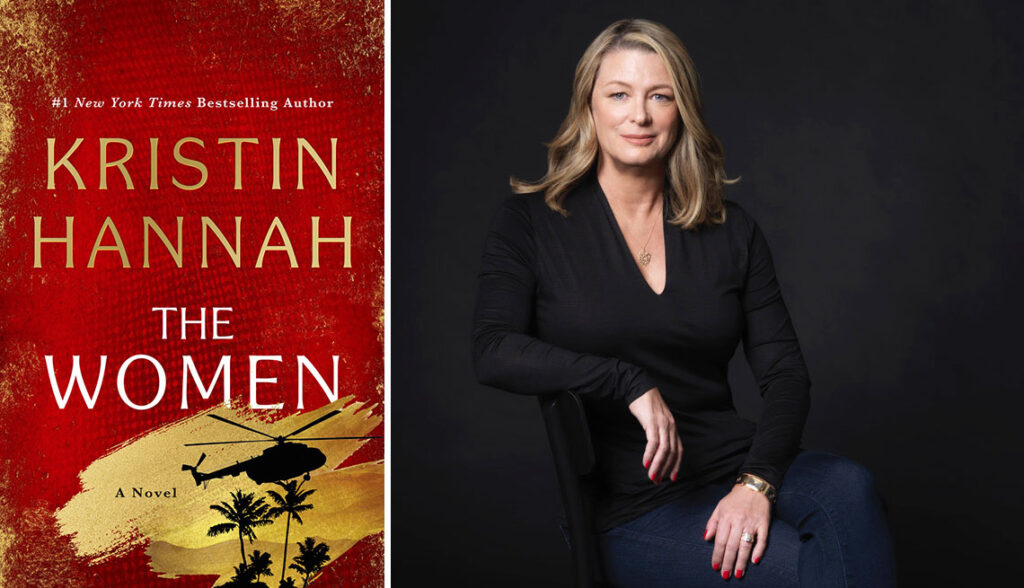
AUDIO BOOKS
Kristin Hannah, The Women (Macmillan Audio)
Read by Julia Whelan, Hannah’s novel about Vietnam War combat nurses blends historical research with the characters’ Vietnam and postwar lives. Some of the minor characters who seem less developed when reading the novel benefit from Whelan’s honey-toned voice, making their stories settle like stepping stones instead of mere landing pads.
Michele Norris, Our Hidden Conversations: What Americans Really Think About Race and Identity (Simon & Schuster Audio)
Read by Peabody Award-winning journalist Michele Norris and a full cast, Our Hidden Conversations puts race in America under the microscope. The book is based on 12 years of submissions from over a half-million people to Norris’s Race Card Project, which asked for six words about race. The story shifts between Norris’ commentary and the voices of people who participated, delivered by a talented cast of narrators.





